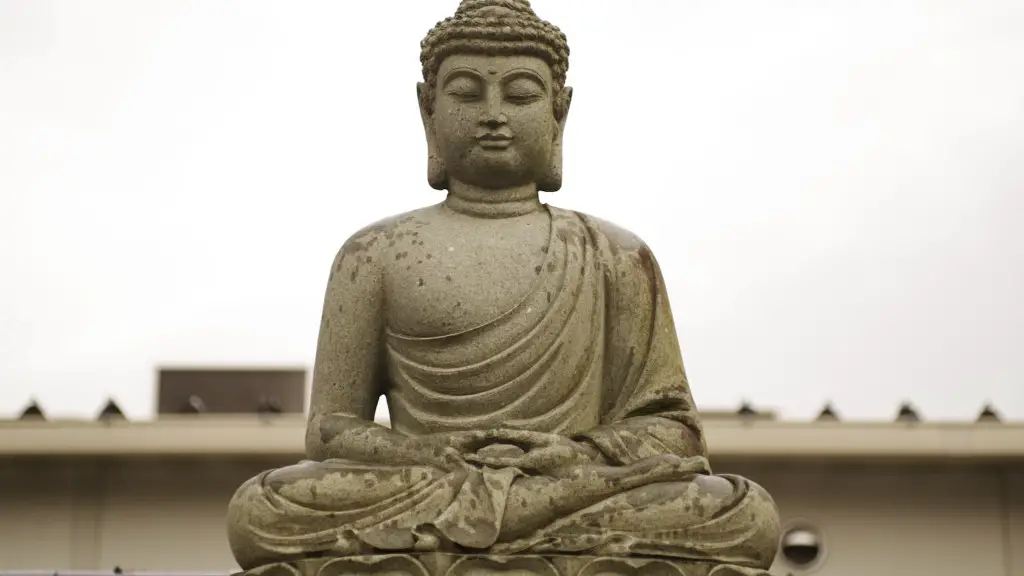History of Hinduism and Buddhism
Hinduism and Buddhism have been two of the most influential religions in the world for centuries. Both originated in India and spread to other parts of the world, though in different ways. Hinduism is at least 5,000 years old and dates back to the Indus Valley Civilization, which was prominent in modern-day Pakistan and north India. On the other hand, Buddhism is said to have originated in the 5th century BCE, when a prince known as Siddhartha Gautama left his life of luxury and became known as “the Buddha.” He gained enlightenment and formulated his philosophy of Buddhism. Buddhism began to spread throughout India and beyond by his followers and faded from India by the 11th century.
Central Beliefs
The core beliefs of the two religions overlap in many ways, despite their different origins. Both are Dharmic religions, which means they have similar attitudes towards law and justice, ethics, and moral principles. Both are oriented towards enlightening individuals and helping them transform and overcome suffering. They also share the notion of reincarnation, karma, and the idea of a liberated being – similar to the concept of a ‘soul’. Additionally, both have an understanding of God, though they view him in different ways. In Hinduism, there are multiple deities, while Buddhism explains that one must realize their own potential to be enlightened.
Importance of Compassion and Meditation
Both religions also emphasize the power of compassion and meditation, which are two of Buddhism’s four Nobel Truths. While Buddhism focuses on meditation as a way to achieve tranquility and enlightenment, Hinduism uses it as a means to gain insight into the existence of others and one’s true self. Additionally, both religions recognize that all living beings are interconnected and advocate for loving kindness and charity towards others.
Differences in Practices
Though Hinduism and Buddhism share certain beliefs, they also differ significantly, particularly in terms of their rituals and practices. For example, Hindus practice puja, the ritual offering of food and other items to the gods, while Buddhists practice a prayer-like ritual known as prostrations. Additionally, Hindus often have regular visits to temples and use murtis (statues of deities) for meditation and puja, whereas Buddhists typically go on pilgrimages to sacred sites, or even conduct their own rituals, such as chanting and walking meditation. Furthermore, Hindus may employ the use of mantras or the performance of bhajans (devotional songs) to gain higher understanding, while Buddhists rely more on the written sutras as sources of deep wisdom.
Attitude Towards Animals
Another difference between the two religions is their view of animals. As Hinduism considers all living beings to be sacred, the eating of animals is actively discouraged and is only permissible when done under certain conditions. Contrary to this, Buddhism places less emphasis on the status of animals and instead encourages vegetarianism as a way of manifesting compassion and respect for all life forms. For these reasons, many Buddhists choose to become vegetarians or adhere to vegan principles.
Relevance to Modern Life
Despite the various differences between Hinduism and Buddhism, both religions remain relevant and impactful in modern life. The core principles of both religions, such as non-violence, the recognition of the interconnectedness between all living beings, and the emphasis on self-reflection, remain applicable to contemporary issues around the world. Additionally, by studying their various texts and beliefs, individuals can gain greater insight into how to live a life of mindfulness, tranquility, and wisdom.
Role of Yoga
Yoga is one of the most recognizable elements of both Hinduism and Buddhism and has become increasingly popular in the Western world in recent years. While yoga is mostly associated with Hinduism, Buddhism actually incorporates many of the same postures, breathing techniques, and mudras. Additionally, both religions stress the importance of proper posture and cleanliness while practicing yoga. As such, yoga serves as an effective tool for deepening physical, mental, and spiritual health.
Role of Arts and Architecture
The two religions have also inspired many forms of art and architecture, such as sculptures, paintings, dance, and music. Hinduism has left a lasting impression on the arts in India, with the influence of its gods and goddesses being evident in paintings, sculptures, and other works. On the other hand, Buddhism was a major influence on many forms of art in East and Southeast Asia, particularly in countries such as China, Japan, and Korea. Many of its deities, such as the laughing Buddha and the bodhisattva Avalokiteśvara, have become iconic in art and architecture.
Influence of Hinduism and Buddhism Globally
Both Hinduism and Buddhism have had a profound influence on the world. Their core principles of meditation, non-violence, and respect for all living beings have had a lasting impact on societies around the world. Additionally, their emphasis on the self has allowed individuals to gain deeper insight into their own psyche and the nature of existence. From the architecture of the ancient Indian subcontinent to the ritualistic practices of Zen Buddhism in Japan, their presence can be seen in many aspects of modern life.
Philosophical Views
The two religions also share many philosophical views. Hindu scriptures and Buddhist canon such as the Upanishads, the Mahabharata, the Bhagavad Gita, and the Dhammapada offer deep insight into life’s mysteries for both believers and non-believers alike. The philosophies of Hinduism and Buddhism both emphasize the importance of living a moral life, developing good habits and dispositions, and striving to overcome attachment to the material world. The common refrain of both religions is to live in harmony with all living beings, practice virtue, and recognize the interconnectedness of all life.
Use of Mythology
Both Hinduism and Buddhism have a rich mythology that offers insight into their teachings. Hinduism draws heavily on the stories of gods and goddesses found in the Rig-Veda and the Mahabharata, while Buddhism uses tales of the Gautama Buddha and his many former lives to illustrate their core beliefs. Both religions use these stories to convey the idea of reincarnation and the journey of the soul to liberation, and to emphasize the importance of following the path of Dharma.
Conclusion
Hinduism and Buddhism are two of the most influential religions in the world. Despite having different origins and practices, the two share many core beliefs, such as the importance of self-reflection, compassion, and meditation. Additionally, they both have had a profound effect on the world, through their impact on societies and their use of mythology, philosophy, and art. Through the shared teachings of Hinduism and Buddhism, individuals are able to gain insight into the nature of existence and become more conscious of their own thoughts and actions.

